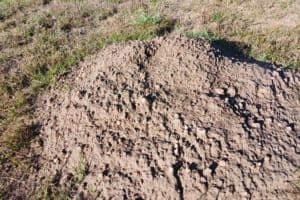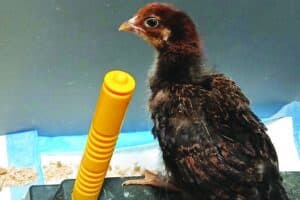Longtime local journalist Bill Radford and his wife, Margaret, live on 5 acres in the Falcon area with chickens, rabbits, dogs, cats, two noisy parrots, goats and two horses. Contact Bill at billradford3@gmail.com
Why did the wild turkey cross the road?I don’t know. But I wish it would be more careful. Didn’t its mother teach it to look both ways?There is a group of four turkeys ñ- seemingly three females and a male ó that I regularly see not far from my home; they like to hang out on either side of Jones Road and don’t seem to be particularly wary of the cars racing down the road. I was heading down Jones one day when I saw a large, dark shape in the middle of the road ahead of me; as I got closer, I realized it was the male turkey, who apparently didn’t see any urgent need to get off the road.With turkey time ó aka Thanksgiving ó coming up, I was curious about the birds. Would turkeys hang out in a small group like this or would they be part of a larger flock? There might be days or even weeks between my turkey sightings; how far would they roam?For the answers to such questions, I turned to Aaron Berscheid, a district wildlife manager with Colorado Parks and Wildlife, whose “Wildlife Matters” column you’ll find each month in this publication.”Turkeys can move around quite a bit,” he explained via email. “There is not a typical flock size. The flock size and the makeup of the flock can depend on the time of year, the terrain, the subspecies of turkey and the habitat availability.”In the fall and winter, you may see “mixed” flocks consisting of toms (mature males), jakes (immature males), hens (females) and polts (turkey chicks), Berscheid said. Some flocks, he said,”have everything they need year-round in one area, so they will stay in a general range. Other flocks need other habitat depending on the time of year, so they tend to migrate depending on the season.”There are two subspecies of wild turkeys in the area. “The Miriam’s subspecies is typically found in mountainous and evergreen forest areas,” Berscheid said. “If you live in the Black Forest area, you are likely to see Miriam’s turkeys. However, in the river bottoms of the Bijou Basin and other creeks in the area, it is possible that you will see some Rio Grande subspecies or even hybrids (they do interbreed).”That there are any turkeys around at all is due, at least in part, to intense conservation efforts. Turkey populations were once decimated because of poaching and habitat destruction, according to the CPW website. “In fact, during the period of the Great Depression, only 30,000 of them existed on the continent.”Thanks to conservation efforts by a variety of groups, the U.S. is now home to more than 7 million wild turkeys, the website states. In Colorado, an aggressive reintroduction program was launched in the 1980s and wild turkeys are now found in most Colorado counties. In fact, the website notes,”The reintroduction of wild turkeys in Colorado has proven so successful that CPW has increased hunting licenses to help manage turkey populations in areas where the birds have become overabundant.”And wild turkeys are not necessarily relegated to “the wilds.” My wife has a friend who lives pretty much in the heart of Colorado Springs and takes stunning photos of the wild turkeys that hang out in her neighborhood.”They can be found pretty much anywhere in the state,” Berscheid said. “The limiting factor in seeing or having turkeys in an area is the habitat. Urban turkeys are typically around because people†feed them. In Colorado, it is illegal to feed big game; but, unfortunately it is not illegal to feed turkeys. I highly recommend to people to not feed any wildlife, but that is typically a futile effort.”Distracted motorists are only one threat to wild turkeys in the area.”The largest threat to turkey populations in Colorado and on the plains is habitat loss,” Berscheid said. “That would be the most general and global threat to any and all turkeys. I would say (the threat) locally in Falcon, Black Forest, Peyton and even farther east is human encroachment and loss of habitat to sub-developments. Daily threats to turkeys could definitely involve vehicle collisions, predators (bobcats, coyotes, house cats, etc.); and, if they are a fed flock, disease transmission.”If you want to know even more about wild turkeys, Berscheid touts the National Wild Turkey Federation as a valuable resource; the group’s website is https://www.nwtf.org.





